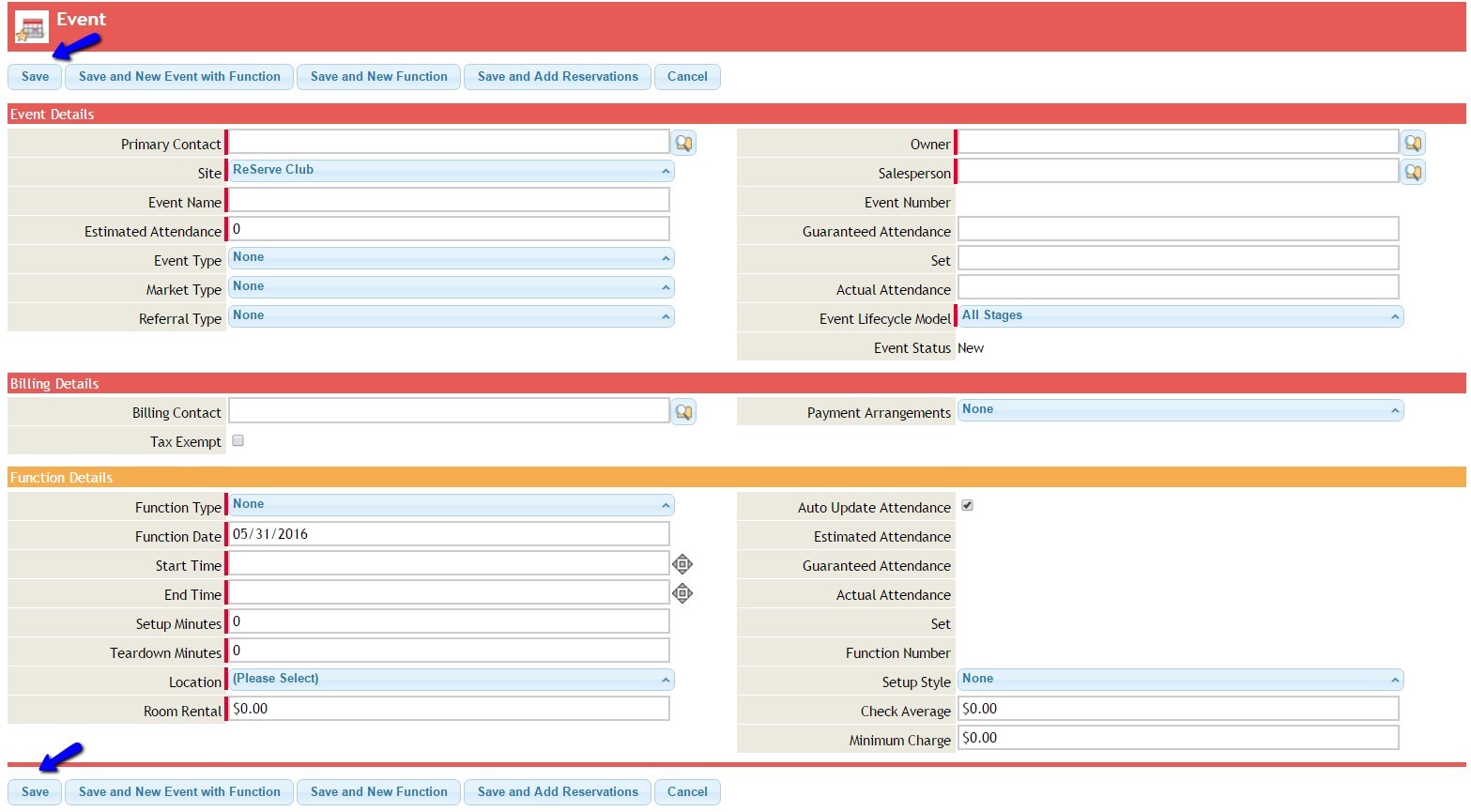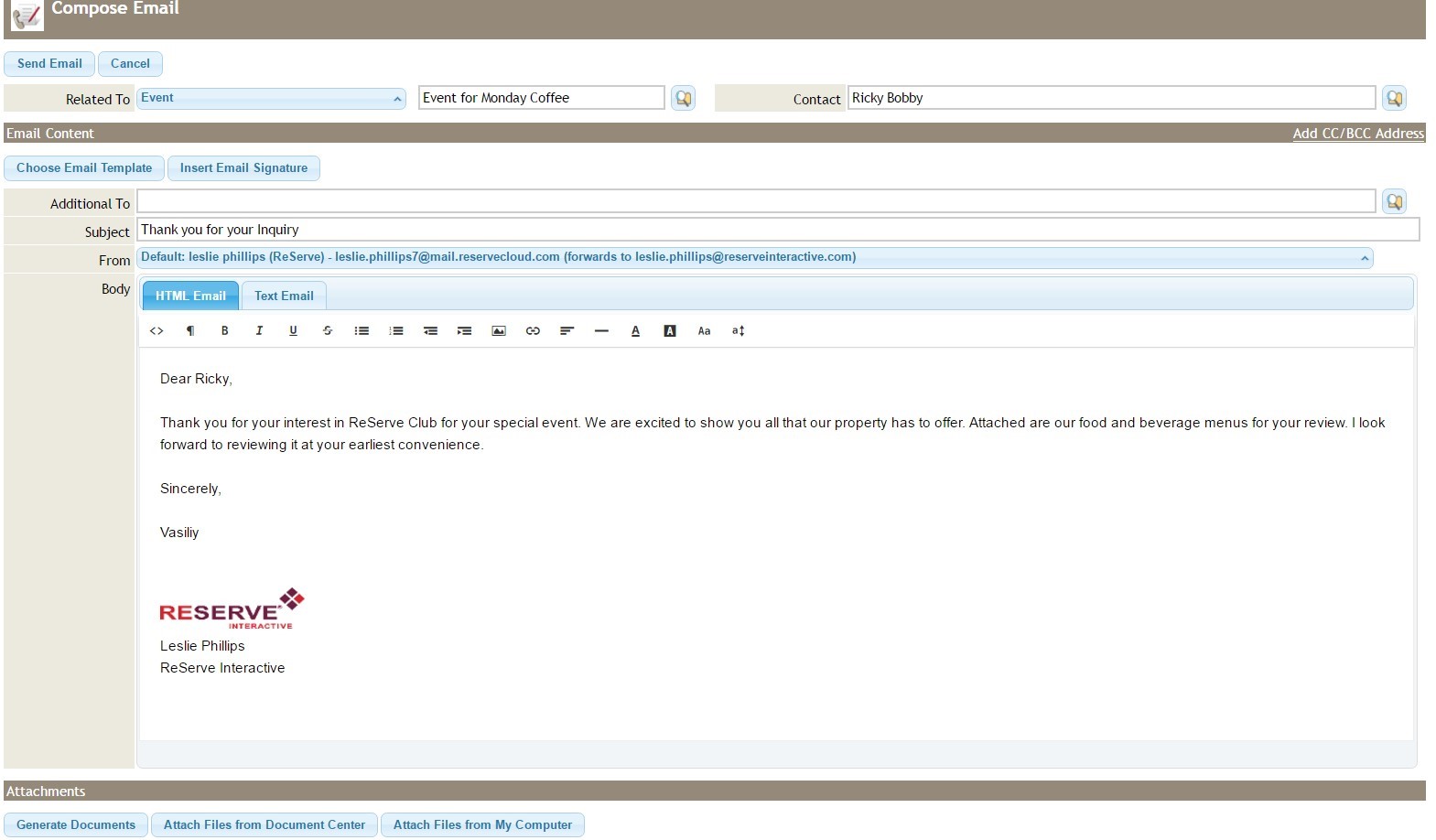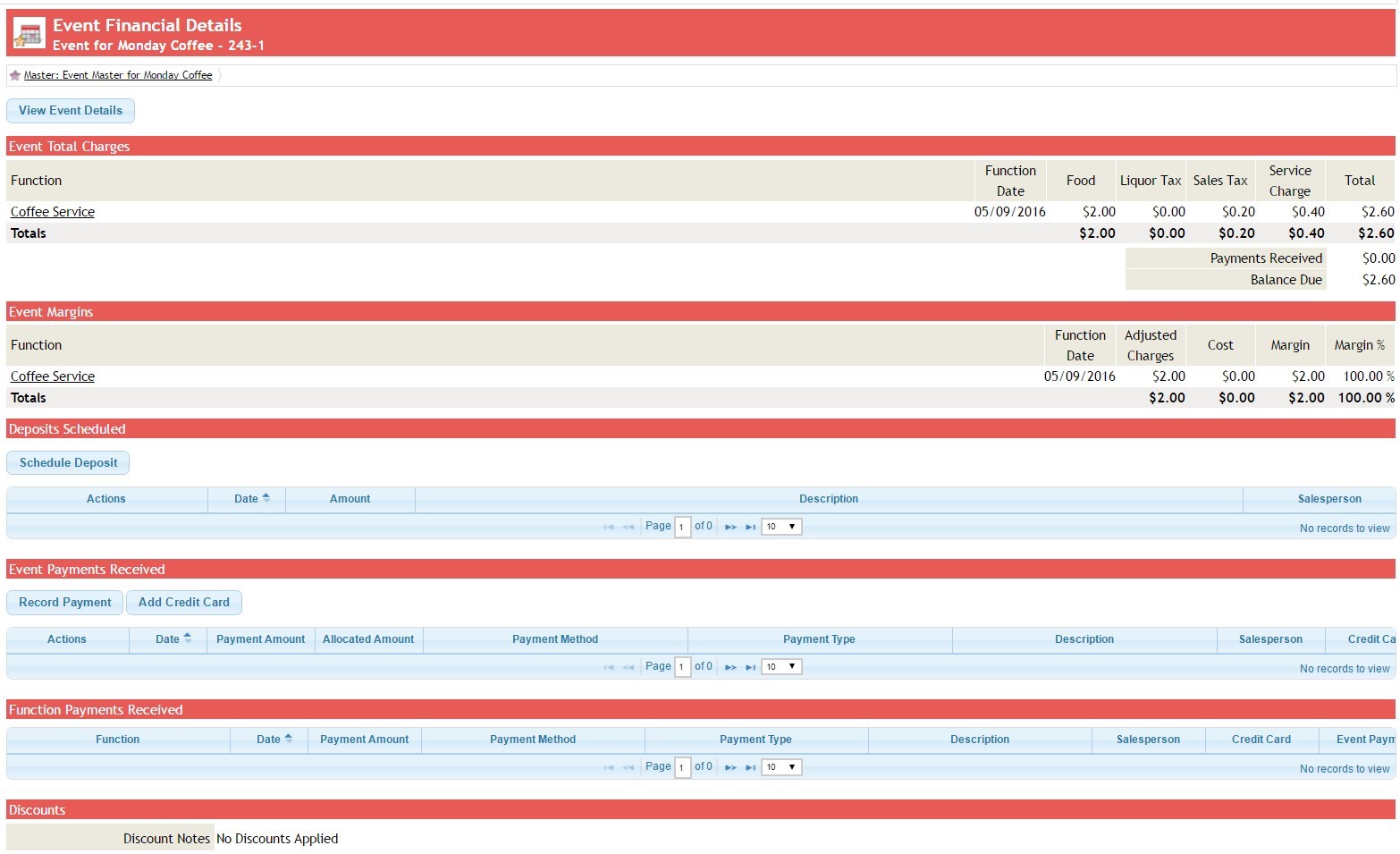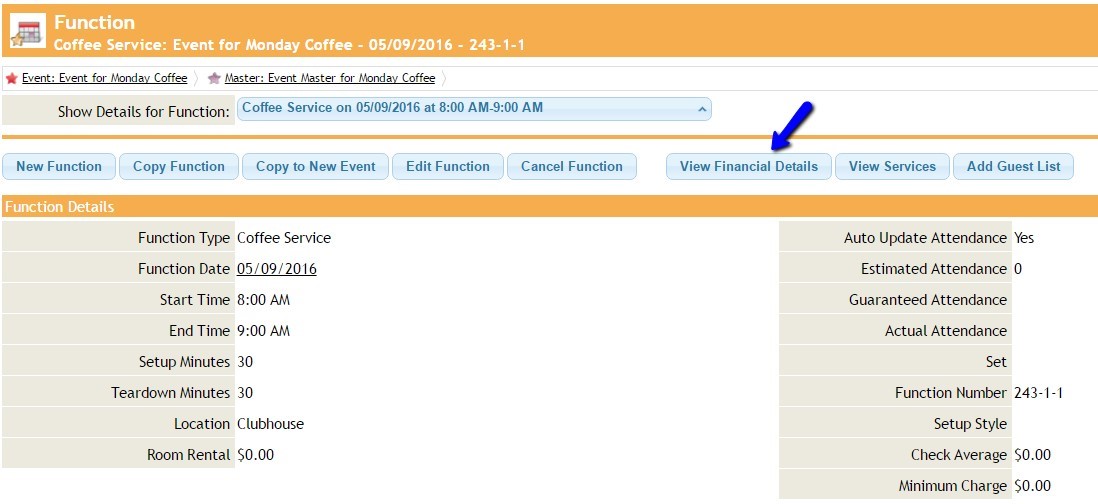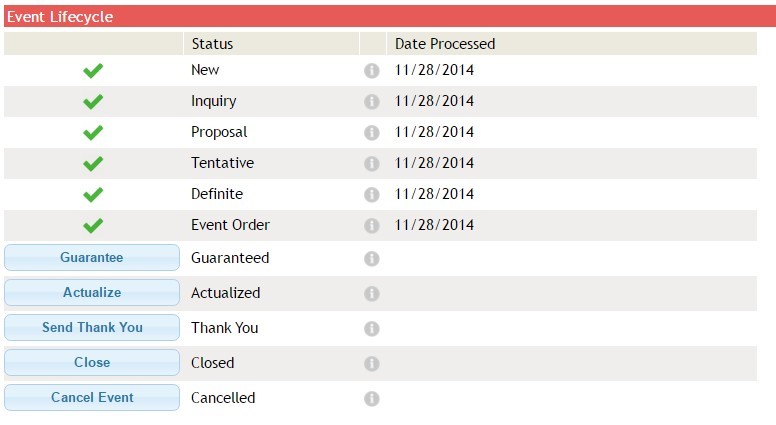...
When an event is booked from the contact’s page, the contact is added to the event as the primary contact. All other required fields must be entered.
Event Details
Once the new event’s required information has been entered, click the “Save” button. There are two “Save” buttons located on the screen. There is one in the upper left corner and one in the lower left corner. Clicking the “Save” button will create the event/function and direct to the Event Details page of the event.
Save and New Function button is used only if additional Functions are needed that may be taking place in different locations within your site for a different time frame.
Save and New Event button is used only if you need to book an additional part of this event that will be taking place in a different site within your organization.
Save and Add Reservations is used only if you are utilizing our Reservations module and need to reserve assets.
Adding Services to a Function
Services can be added from the Function Details page. Scroll down to the yellow Functions section header and click the services link.
Within the Function Services page, click the “Add Menu” button.
Check the box to the left of the desired service menu name and click the “Add” button. Whether a menu has a package price or a dollar allocation is indicated under the Pricing Type column.
In order to add all items in the service menus, click the “Check All Items” button. To add all items under a specific service type, check the top box under the service type header. To add selected items, check the boxes for each desired item. The “Save” buttons at the top and bottom of the page will add the items to the event and direct to the Function Services page.
From the Function Services page, items can be added, removed, or reordered. Items that are not part of the Service Menu can be added by using the “Add Items from Master List” button; custom items can be added by using the “Add Custom Items” button. To return to the Event Details screen, click the ‘Event’ breadcrumb above your title bar.
Use the Edit Menu button or link to edit prices, quantities and/or to add notes.
Click the Save button at the top or the bottom when edits are complete.
Generating Documents
In order to generate/preview a document from the Event or Function Details screen, scroll down to the Communication History section header. Click on the “Generate Event Document” button.
This will direct to the Generate Documents page. A list of available documents will display. Check the box to select the desired document and then click the “Generate Documents” button.
Your document will be available to view according to the way your browser works.
Send Email
To send an email, go the Communication History section and click on Send Event Email, then click Choose Email Template.
To attach a merge document, click Generate Document below the email content area to select the document you would like to generate and have added as an attachment.
Non-merge type documents can also be attached from the Document Center or from your computer.
Click Send Email when ready.
The email will be logged and the email status updated as it is delivered and opened.
View Financial Details
If changes need to be made to an event’s financial information, like adding a discount percentage, scheduling deposits, or recording payments, this can be accomplished under the Event Financial Details Screen. In order to access this screen, click on the “View Financial Details” button at the top of the screen under the Event title bar.
Dollar amount Adjustments, if needed, are added at the Function Level and can be accessed by clicking on the function name link, from within the Event Financial Details page, or from the Function Page by clicking the on View Financial Details button.
Event Lifecycle
Banquets is designed around the stages of a typical event’s lifecycle and allows you to automate your practices. The stages in the event’s lifecycle are listed on the Event Details page.
Inquiry - Process Inquiry when a Contact is “just shopping” for information but you’d like to put them on your calendar as an Inquiry, send out information, and follow up with them later. Contact is not quite ready to be sent a contract.
Proposal - Send Proposal after services have been added and you want to send out a document with the proposed services.
Tentative - Process Tentative when you want to get confirmation of an event by sending out a document requesting a deposit and/or signature.
Definite - Confirm the event when a deposit and/or a signed contract or confirmation letter has been received.
Complete Event Order - Complete Event Order when the service details of your event have been entered, such as food menus, beverage menus, and setup and service requirements, and you are ready to preview or send an Event Order to confirm these details with/to the contact or internal staff. (Changes are still possible after all steps!)
Guarantee - Guarantee your event when the guaranteed attendance figure has been received. This will update all of the quantities for your event. (May be dependent on ‘Auto Quantity’ being turned on for your specific menu(s).
Actualize - Actualize to enter actual attendance and consumption numbers, typically done with the event is over.
Send Thank You - Send a Thank You email or letter after the event has taken place.
Close - Close the event once it has been executed and all outstanding balances have been collected.
Lost Business - Used when the event has been canceled. Banquets will retain its information along with the reason it was canceled, but it will be removed from the Event Calendar.
Using the Event Lifecycle
Clicking an event Lifecycle button navigates to a screen that will allow input of relevant event information like recording payments, printing or e-mailing documents, assigning follow-up tasks, and verifying attendance counts. These automated tasks ensure that no information is accidentally forgotten, provide quick access to required information, and build consistent business practices among users.
The lifecycle steps do not have to be completed sequentially. To move ahead and skip stages, simply click on the desired Lifecycle button to perform the tasks associated with that stage in the Lifecycle. If desired, the Lifecycle can be customized to include fewer steps.
Banquets does not allow an event to move backwards in the lifecycle. However, if an action associated with an earlier stage in the lifecycle needs to be completed, such as printing another document or recording a deposit, this can be done from other areas on the Event Details page, such as Communication History and View Financial Details.
Creating Leads
It is now possible to create “Leads” in Banquets. Leads are intended to be used as a tool to keep track of potential business when the contact might not have a set date. Leads can be created by clicking on the Lead icon from the Navigation Bar and then selecting the “New” button.
...
